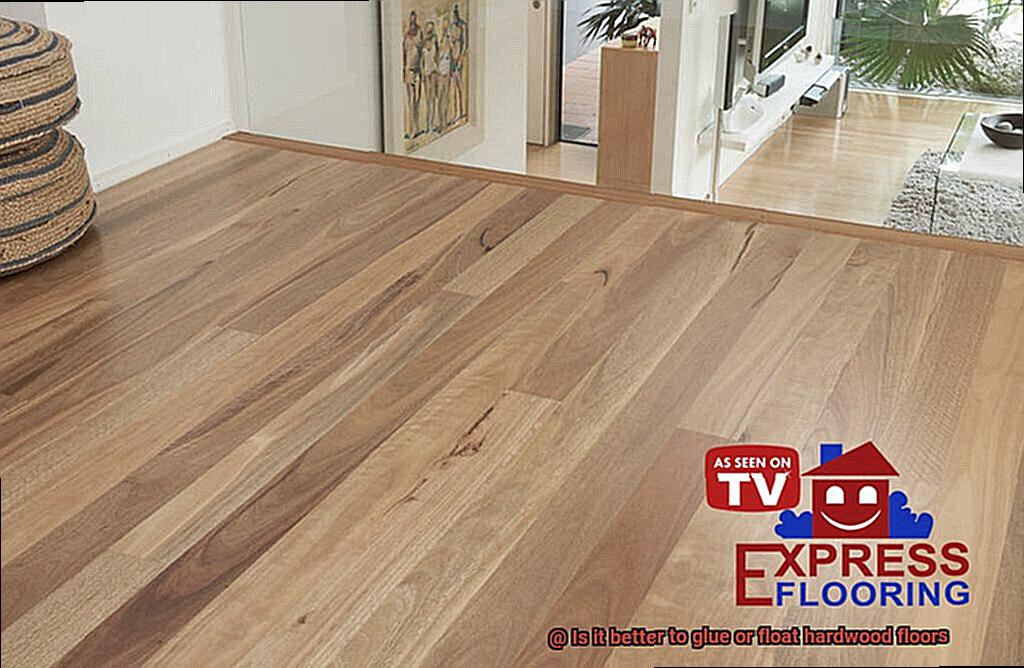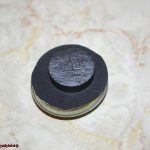Are you currently in the midst of a flooring renovation project and struggling to decide between gluing or floating your hardwood floors? Fear not, my friend, as you’re not alone in this dilemma. It’s a common question that often plagues homeowners who are looking for the perfect way to install their new flooring.
The truth is, both options have their pros and cons, and ultimately, the decision comes down to your individual preferences and circumstances. However, by exploring the advantages and disadvantages of each installation method, you can make an informed decision that best suits your needs.
In this blog post, we’ll delve into the age-old question of whether it’s better to glue or float your hardwood floors. We’ll give you all the nitty-gritty details on what each method entails, when it’s best to use them, and the pros and cons of each approach. With this information at hand, you’ll be able to make a well-informed decision on which installation method is better suited for you.
So if you’re ready to elevate your home with a stunning new hardwood floor but aren’t sure which route to take – don’t fret. Keep reading to learn more about gluing vs. floating hardwood floors.
Advantages of Glued Hardwood Flooring
Contents
- 1 Advantages of Glued Hardwood Flooring
- 2 Disadvantages of Glued Hardwood Flooring
- 3 Advantages of Floating Hardwood Flooring
- 4 Disadvantages of Floating Hardwood Flooring
- 5 Factors to Consider When Choosing Between Gluing or Floating Hardwood Floors
- 6 Cost Comparison Between Gluing and Floating Hardwood Floors
- 7 Maintenance Tips for Gluing and Floating Hardwood Floors
- 8 DIY Installation Tips for Gluing or Floating Hardwood Floors
- 9 Conclusion
If you’re looking for a durable and long-lasting flooring option, glued hardwood flooring may be the perfect fit for your home. Unlike floating floors, which can shift and move over time, glued hardwood floors are secured in place with adhesive, providing a stable base that can withstand high-traffic areas or homes with active children or pets.
One of the primary advantages of glue-down hardwood flooring is its durability. The adhesive creates a strong bond between the hardwood and the subfloor, preventing any movement or shifting of the planks. This makes it a popular choice for those who want a flooring option that can withstand wear and tear.
In addition to durability, glued hardwood flooring also offers soundproofing properties. The adhesive layer acts as a barrier, preventing sound from traveling through the floor and into other rooms. This is particularly beneficial for multi-story homes or apartments where noise can be a concern.
Another benefit of glued hardwood flooring is its seamless appearance. Unlike floating floors, there are no gaps or seams between planks, creating a smooth and uniform surface that adds an elegant touch to any room.
For those considering radiant heating systems in their homes, glued hardwood flooring is also an excellent option. Because there are no air pockets between the subfloor and the hardwood planks, heat can transfer more efficiently, providing a comfortable and energy-efficient heating solution.
While repairs can be difficult with glued hardwood flooring due to the secure attachment to the subfloor and longer installation times due to drying time for the adhesive, these downsides are outweighed by the benefits of durability, soundproofing, seamless appearance, and compatibility with radiant heating systems.
Disadvantages of Glued Hardwood Flooring
When it comes to choosing hardwood flooring, there are two popular methods of installation: gluing and floating. Glued hardwood flooring may seem like an appealing option due to its stability and sound insulation, but before making a final decision, consider the potential disadvantages.
One of the biggest drawbacks of glued hardwood flooring is the difficulty and cost of removal. The adhesive used to glue the hardwood to the subfloor can be incredibly strong, making it challenging to remove without damaging the subfloor underneath. This can result in additional expenses and professional help needed for future flooring replacements.
In addition to being difficult to remove, glued hardwood flooring can also be more expensive than floating hardwood flooring. The installation process itself is more labor-intensive and requires additional costs associated with purchasing the adhesive. This makes it a less cost-effective option for those on a tighter budget.
Another disadvantage of glued hardwood flooring is its susceptibility to moisture damage. If the adhesive is not applied correctly or if there are gaps in between the planks, moisture can seep through and cause warping or buckling of the hardwood. This can lead to costly repairs and a shorter lifespan for your floors.
Lastly, it’s crucial to note that glued hardwood flooring may not be suitable for all types of subfloors. It requires a level and smooth surface for proper adhesion, which may not be possible on certain subfloors such as concrete or uneven surfaces. This can limit your options when it comes to choosing the type of flooring you want.
Advantages of Floating Hardwood Flooring
If you’re in the market for new hardwood floors, you may be wondering which installation method to choose. While glued-down floors have been popular for years, floating hardwood floors have become increasingly popular in recent times due to their many advantages. Here are just a few reasons why floating hardwood flooring may be the perfect choice for your home or business.
First and foremost, one of the biggest advantages of floating hardwood floors is their ease of installation. Unlike glue-down floors, which require a lot of preparation and precise placement, floating floors can be installed quickly and easily using a simple click-and-lock system. This not only saves time and effort but also reduces labor costs, making them a cost-effective option.
Moreover, floating hardwood floors are incredibly versatile, as they can be installed over almost any type of subfloor, such as concrete, plywood, and even existing flooring. This makes them an ideal choice for both new constructions and remodeling projects alike. Additionally, they eliminate the need for removing old flooring or adding an underlayment, which again saves on expenses.
Another significant advantage of floating hardwood floors is their durability. They’re made with high-quality materials that resist wear and tear and are designed to withstand heavy foot traffic without showing signs of damage. This means that they will last longer than other types of flooring and save you money in the long run.
Disadvantages of Floating Hardwood Flooring
While this installation method has its advantages, it also has some notable downsides that you should be aware of.
First and foremost, floating hardwood flooring can be noisy. If you’re someone who cringes at the sound of footsteps echoing through your home, a floating floor may not be the best choice for you. The lack of secure attachment to the subfloor can cause a hollow sound when you walk on it, which can be quite bothersome to some.
In addition to noise, durability is another disadvantage of floating hardwood flooring. Since the planks are not firmly anchored to the subfloor, they can shift and move over time, causing them to wear down more quickly than glued-down flooring. This can be especially problematic in high-traffic areas like hallways and kitchens.
Repairing floating hardwood floors can also be challenging. If one plank becomes damaged or needs to be replaced, it can be difficult to remove and replace without damaging surrounding planks. This could result in a patchy-looking floor if not done correctly.
Lastly, it’s crucial to ensure that your subfloor is level and in good condition before installing floating hardwood flooring. Imperfections or unevenness in the subfloor can cause problems during installation and lead to issues with the finished floor. This means additional prep work may be necessary before installation, which could add to the overall cost and time required.
Factors to Consider When Choosing Between Gluing or Floating Hardwood Floors
When it comes to installing hardwood floors, one of the biggest decisions you’ll need to make is whether to glue or float them. But how do you know which method is right for you? As an expert in this field, I’ve done some research to help guide you in making the best choice for your individual needs.
Let’s start with the first factor to consider: your subfloor. If you have a concrete subfloor, gluing is typically recommended as it provides a strong adhesive bond. However, if your subfloor is wooden, floating may be a better option as it allows for more flexibility. Remember, a level subfloor is crucial for either installation method.

Next up is the type of hardwood flooring you are using. Engineered hardwood is designed specifically for floating installations, while solid hardwood may require gluing or nailing down. It’s important to choose the right type of flooring for your desired installation method.

Consider the level of foot traffic in the room where the flooring will be installed. For high-traffic areas, gluing may be a better option because it provides a more stable and secure installation. However, if you prefer a softer feel underfoot, floating floors may be more comfortable.
The overall look and feel of the room should also be taken into account. Glued-down floors provide a more seamless and uniform appearance, while floating floors can have a slight bounce or give underfoot. Additionally, glued-down floors tend to be quieter and less prone to squeaking than floating floors.
Lastly, think about the installation process itself. Gluing requires more time and effort upfront as the adhesive needs to dry before furniture can be moved onto the floor. Floating floors can be installed more quickly and with less mess but may require additional underlayment or padding.
Cost Comparison Between Gluing and Floating Hardwood Floors
After extensive research, I can confidently say that floating floors tend to be less expensive upfront compared to glued floors.
One of the primary factors that affect the cost difference is labor. Gluing requires more time and effort to apply adhesive and attach each plank, which increases labor costs. Conversely, floating floors can be installed more quickly and easily since they don’t require any adhesive, which saves on labor costs.
Moreover, the type of hardwood used may affect the total cost. Some types of hardwood may require specific adhesives or underlayment, which can vary in price and add to the overall cost of gluing. Additionally, some hardwoods may be challenging to install than others, affecting the final cost.
It’s essential to note that while floating floors may be less expensive upfront, they may not always be ideal for every situation. Gluing may be necessary for certain subfloor types or areas with heavy foot traffic. Additionally, gluing may provide a more stable and secure floor than floating.
When considering cost comparison between gluing and floating hardwood floors, it’s crucial to weigh the benefits and drawbacks of each installation method before making a decision based solely on cost. Consulting with a professional installer is recommended to determine which method is best suited for your specific needs and budget.
Maintenance Tips for Gluing and Floating Hardwood Floors
Your hardwood floors are a beautiful and valuable investment, so it’s important to maintain them properly. Whether you have glued or floated hardwood floors, there are specific maintenance tips that can help keep them in great condition for years to come. Here are five sub-sections that provide detailed information on how to maintain your hardwood floors:
Avoid Excessive Moisture

Excess moisture can cause serious damage to both glued and floated hardwood floors. For glued hardwood floors, water can weaken the adhesive that holds the floorboards in place, causing them to warp or buckle. On the other hand, floated hardwood floors can be damaged if water seeps into the gaps between the boards, causing them to separate over time. Therefore, it’s important to avoid wet mopping and instead opt for a dry or slightly damp mop when cleaning your hardwood floors.
Use Proper Cleaning Products
Using the right cleaning products is crucial to maintaining both glued and floated hardwood floors. For glued hardwood floors, it’s recommended to use a specially formulated hardwood floor cleaner that is safe for glue-down installations. For floated hardwood floors, a microfiber mop or vacuum with a hard floor attachment will suffice.
Regularly Check for Damage or Wear
It’s important to regularly inspect your hardwood floors for any signs of damage or wear. This can include scratches, dents, or discoloration in the wood. Catching these issues early on can prevent further damage and prolong the life of your floors.
Protect from Scratches and Dents
Hardwood floors are prone to scratches and dents caused by furniture legs or other objects. To prevent this damage, it’s important to keep furniture legs padded with felt pads or other protective materials.
Check for Gaps Between Boards
Floated hardwood floors can develop gaps between the boards over time due to changes in temperature and humidity. Periodically checking for these gaps and ensuring that the underlayment is still intact and in good condition can prevent further damage.
DIY Installation Tips for Gluing or Floating Hardwood Floors
When it comes to installing hardwood floors, there are two popular methods to choose from: gluing and floating. Both have their benefits, but the key to a successful DIY installation is understanding how to do it correctly. Below are some essential tips for gluing or floating hardwood floors.
Preparing the Subfloor:
Before installing any hardwood flooring, it is crucial to ensure that the subfloor is clean, level, and dry. Any debris or unevenness can lead to issues with the adhesive bond or cause problems with planks fitting together. Taking the time to prepare the subfloor properly can prevent any headaches down the line.
Choosing the Right Adhesive:
When it comes to gluing hardwood floors, selecting the correct adhesive is critical. Different species of hardwood and subfloor materials require specific types of adhesive. It’s essential to read manufacturer recommendations and follow their instructions carefully regarding drying time and temperature. Using the wrong adhesive can result in a failed installation.
Installing a Moisture Barrier:
For floating hardwood floor installations, it is important to install a moisture barrier on the subfloor to prevent moisture from seeping up from below. Moisture can cause warping or buckling of the planks over time, which is why a moisture barrier is essential for a floating installation.
Allowing for Expansion and Contraction:
During floating hardwood floor installations, there should be a gap between the perimeter of the room and planks to allow for expansion and contraction due to changes in humidity levels. Failure to allow for this movement can result in gaps between planks or even damage to the hardwood itself.
Acclimating Hardwood Planks:
Regardless of whether you’re using glued or floating installation methods, acclimating hardwood planks before installation is vital. This process involves allowing the planks to adjust to the temperature and humidity levels of the room for at least 48 hours before installation. This ensures that any potential warping or buckling occurs before installation, rather than after.
Maintaining Consistent Spacing:
Lastly, maintaining consistent spacing between planks is crucial for a successful installation. Using spacers between planks during installation can help achieve a tight fit and reduce any gaps between them. Precision is key when measuring and cutting planks, so taking your time and double-checking measurements can prevent any issues with spacing.
NHzvxTqFfE0″ >
Conclusion
In conclusion, the debate over whether to glue or float your hardwood floors is a complex one that requires careful consideration. Ultimately, the decision comes down to your personal preferences and circumstances. Both installation methods have their advantages and disadvantages.
Glued-down hardwood flooring offers durability, soundproofing properties, a seamless appearance, and compatibility with radiant heating systems. However, it can be difficult and expensive to remove if necessary, more costly upfront than floating floors, susceptible to moisture damage if not applied correctly, and may not be suitable for all types of subfloors.
On the other hand, floating hardwood flooring offers ease of installation, versatility in terms of subfloor types and existing flooring coverings, cost-effectiveness, and durability. But it can also be noisy due to lack of secure attachment to the subfloor and less stable than glued-down flooring which can lead to quicker wear down in high-traffic areas like hallways or kitchens.
When making your decision between gluing or floating hardwood floors, it’s important to consider factors such as subfloor type, foot traffic level in the room where the flooring will be installed, overall look and feel of the room. Cost comparison is another crucial factor that needs careful consideration before deciding on either method.
Proper maintenance tips for both methods include avoiding excessive moisture exposure; using proper cleaning products; regularly checking for damage or wear; protecting from scratches and dents; checking for gaps between boards; acclimating planks before installation; maintaining consistent spacing during installation.
Ultimately, there is no one-size-fits-all answer when it comes to choosing between gluing or floating hardwood floors.






